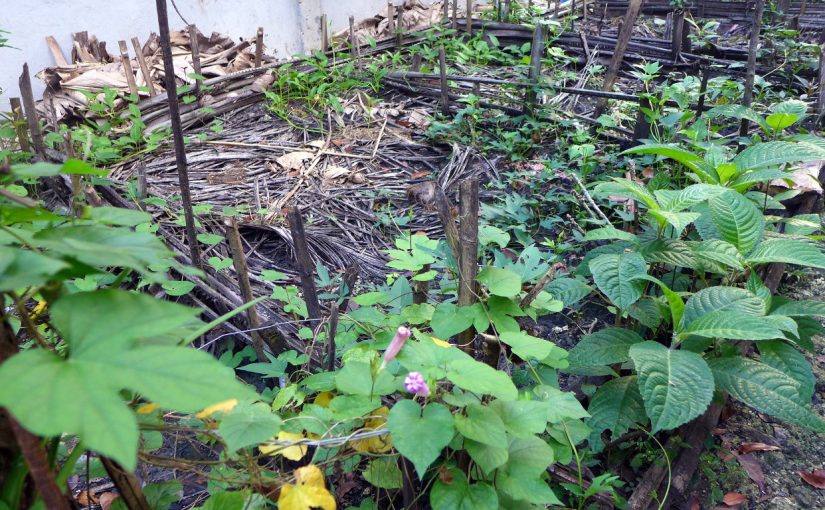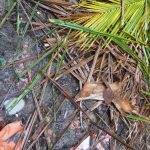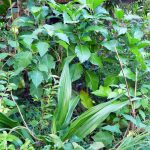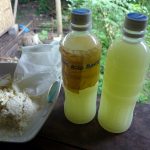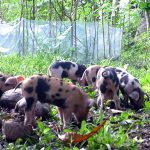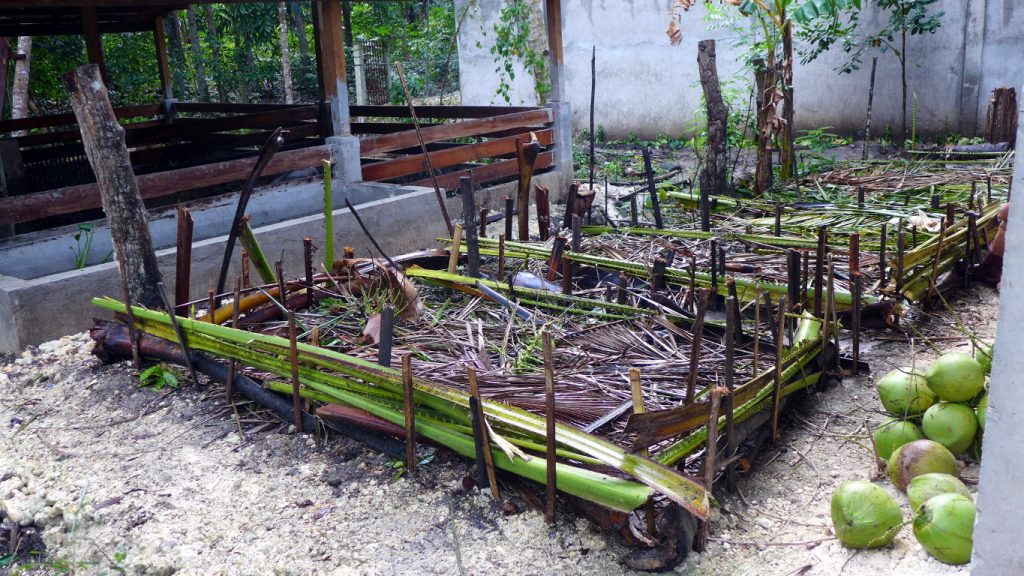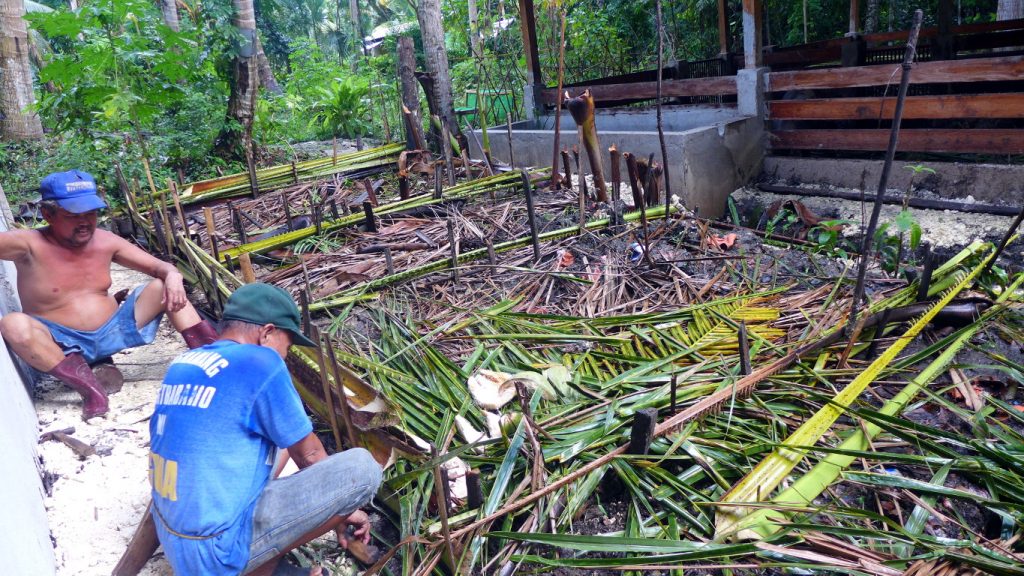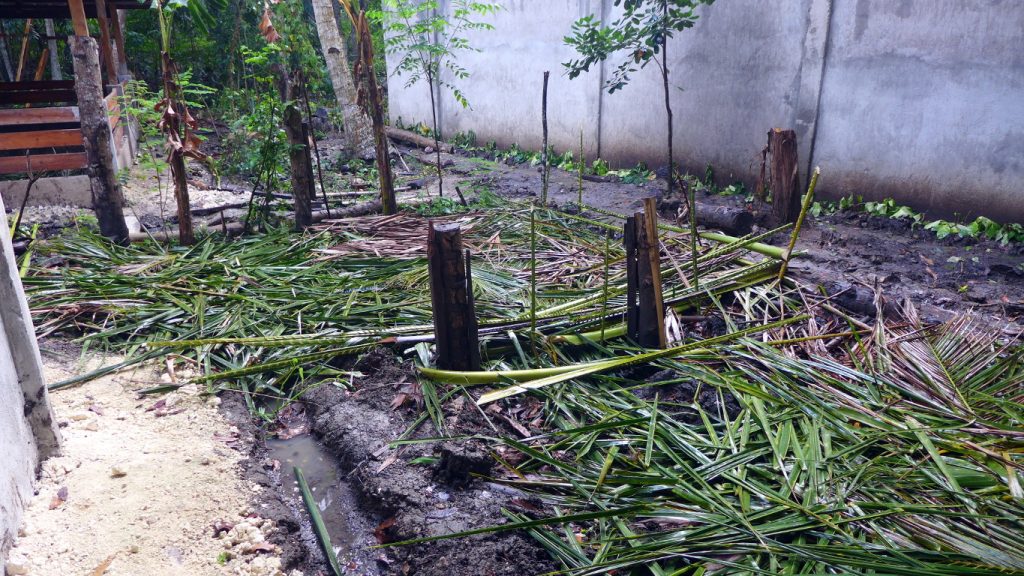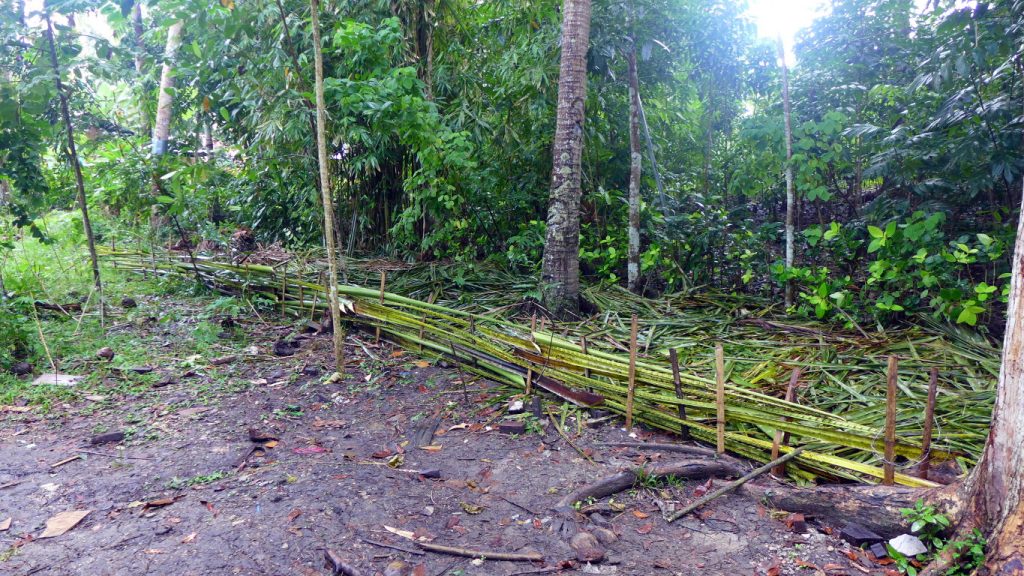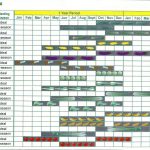It has been nearly 4 months now and here are photos showing progress on the West Garden. From September-October last year we had construction work on the western part of the garden to rebuild the old pigpens. In November, we proceeded with mulching, planting and digging rain gardens in areas prone to flooding. La Niña also meant above average rainfall from October-March, so it was quite a challenge trying to get the garden into good shape. We had some important practical goals: (1) to control flooding in the area when it rains, (2) to improve fertility and texture of the soil, (3) to grow more forage crops for the animals, and (4) to make the garden resilient if or when the drought (El Niño) comes.
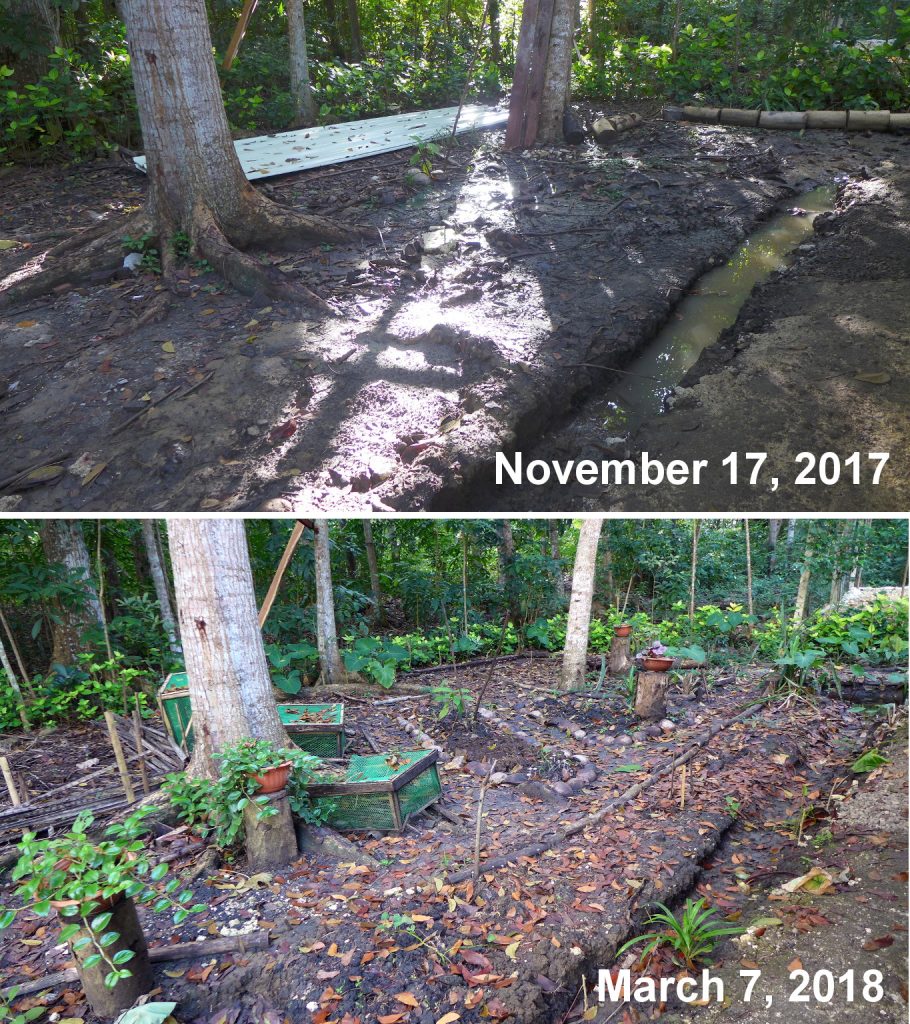
Above photo shows the southern end of the west garden. We have moved the sheet roofing left on the ground to a better location under the house. The stumps of gemelina wood lying on the ground have been stood up to serve as support for potted plants. A rain garden was dug up at the end of the canal. Pathways and plant beds were established. Getting seedling to grow in this area is difficult because it is next to large mahogany growth. The mahogany trees shed their leaves and increase tannin seepage into the ground. Mahogany trees also create dappled shade, making it difficult or impossible for sun-loving plants to grow. This area also floods quite considerably when it rains, killing young seedlings.
We have managed to grow plants that thrive in such difficult conditions such as San Franciso plants along the hedge and green and purple gabi (taro). Some pandan have managed to survive as well.
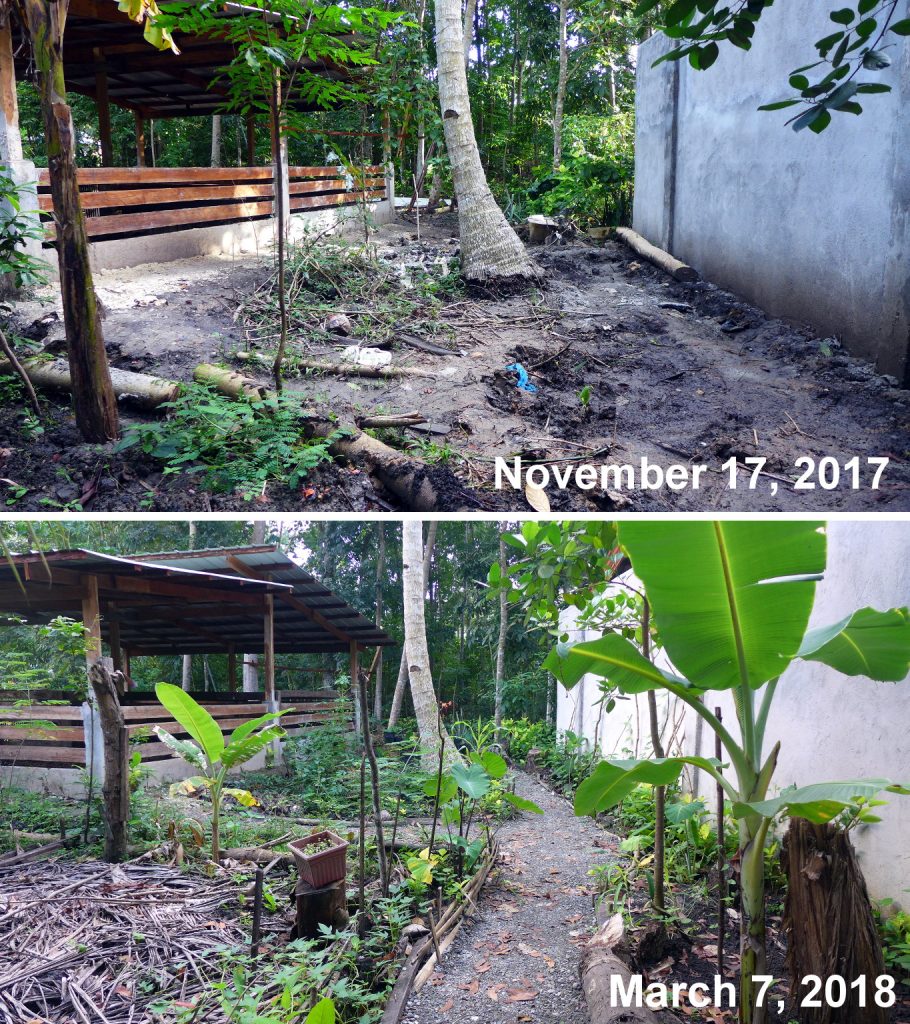
Above photo shows the longest side of the west garden. We have trimmed the young Jackfruit tree and the banana tree on the right side which was trampled to the ground by construction work have regenerated. The path became flooded, muddy and dangerously slippery and this has been amended by paving with sand and gravel. There is a large area mulched with dry coconut leaves on the left – this used to be a goat pen. Now, kangkong and kamote planted there are crawling over the mulch. Soil from dug-up rain gardens and compost from the pigpens were placed around the coconut tree where vegetation has started growing.
We have also planted flowering vines and placed support for them to climb on going over the pathways. This will take some more time! Some climbing plants were also planted along the wall and we are hoping that in time, the wall will be covered with vegetation.
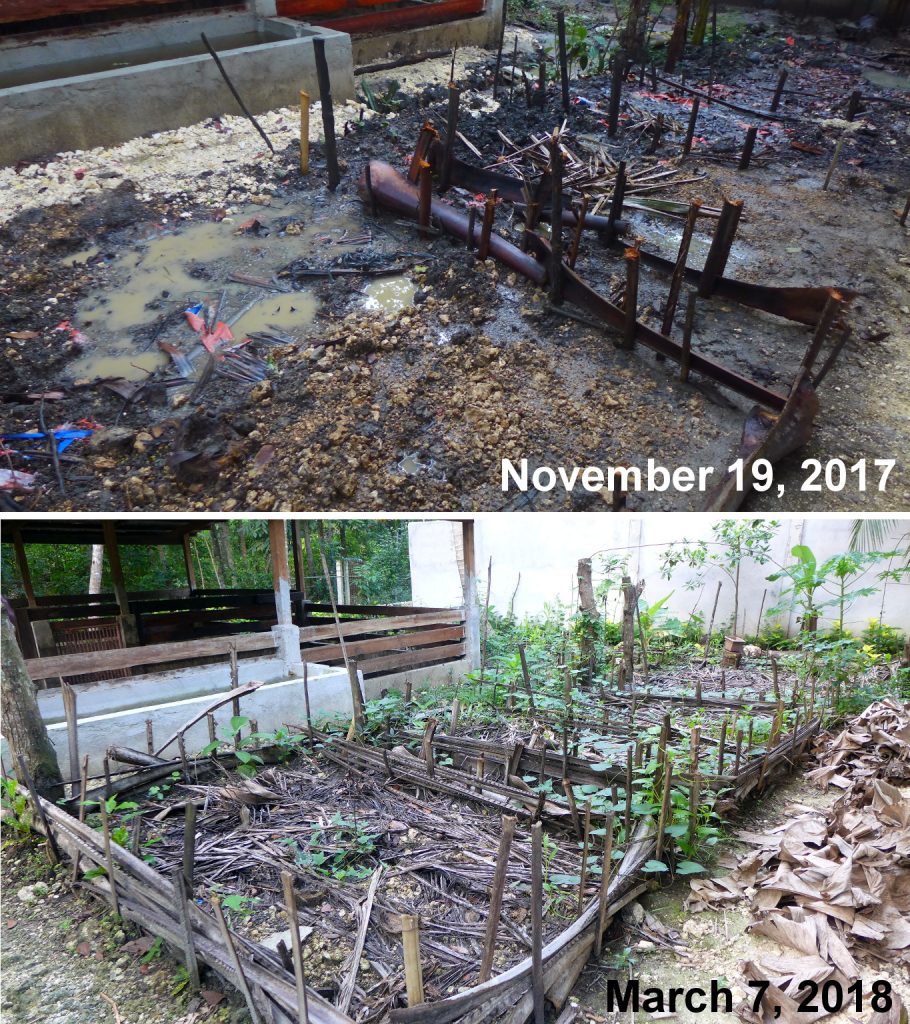
Above photo shows progress in the area that used to be the old boar pen. The vacated area was a mud pit and needed a lot of mulching and treatment with lactic acid bacteria to decompose manure and aerate the soil. Over time, what used to be a barren area is now starting to become green with kangkong, kamote, papaya, gabi and forage crops such as madre de agua (tricanthera). The dry banana leaves on the right are reserved for the sow when she gives birth this month.

Here (above photo) is a closer look at one of the rain gardens. Water goes down slow in this location but the gabi planted here seems to love it. Some pandan, tiger tail plants and kangkong are growing in the vicinity.
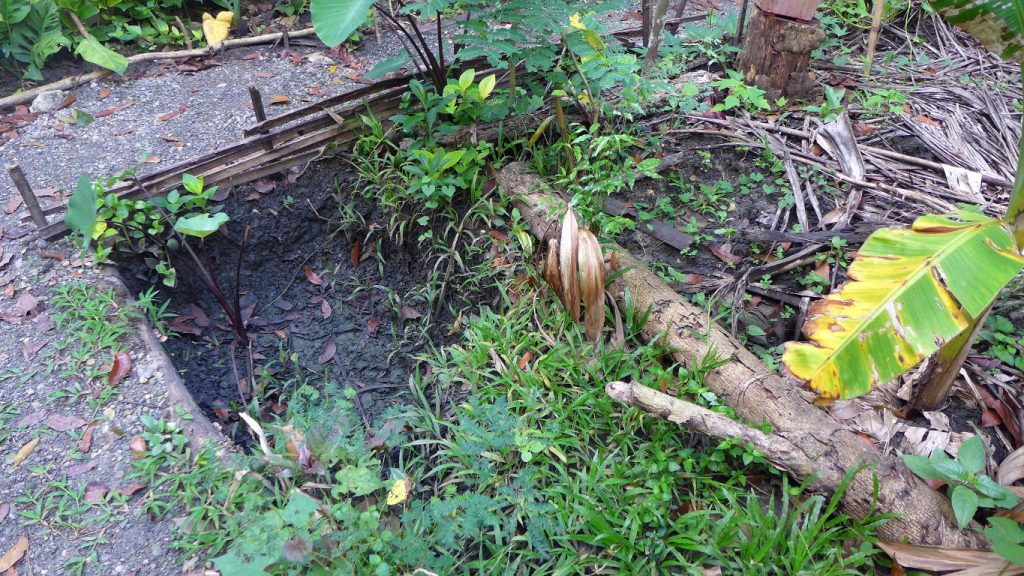
This photo (above) shows the other rain garden which drains faster than the previous one. The gabi planted here are doing well. Some kamote are growing along the canal leading to the rain garden. A banana was planted nearby, although not flourishing, it is managing to survive. A lot of grass is growing here as well, much more here than in the other areas.

One side of the old boar pen (above) showing one of the flowering vines and the madre de agua (tricanthera), planted as cuttings and now growing very well.

Along the old goat pen (above), this photo shows the growth of two types of kangkong and an okra seedling.
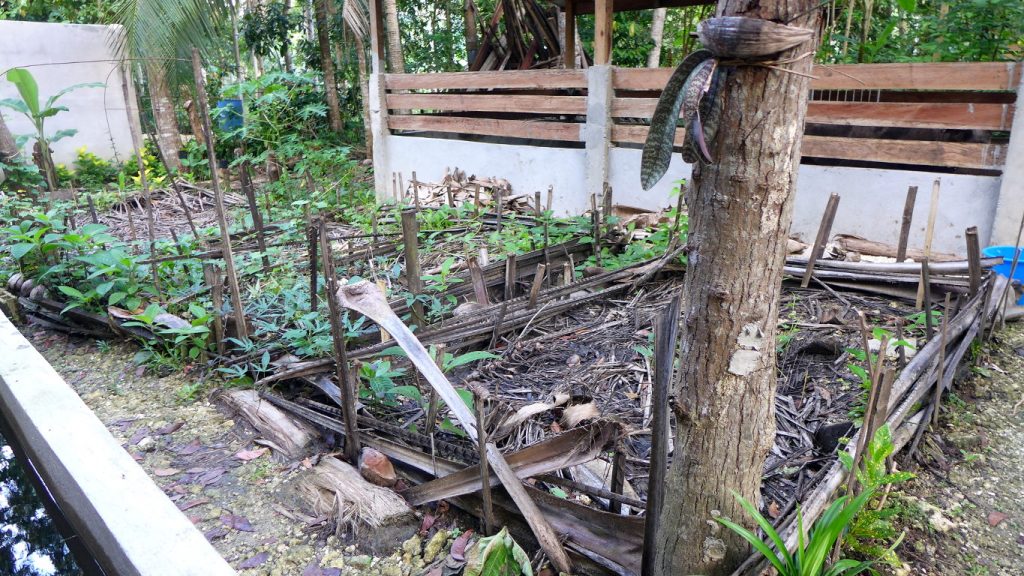
Another view of the West Garden towards the old boar pen showing more vegetation and an orchid planted on one of the posts used for the pen. We have mounted more orchids in the other posts left from the old goat and pigpens.
We are very happy with progress on the West Garden, considering the state it was left in by construction work last year. We are hoping that as more vegetation grows in this area, it will be less prone to flooding and will be protected from drying out during the hot summer months.
What has helped tremendously in this effort are mulching, rain gardens, compost from the pigpens and the application of lactic acid bacteria and a small amount of indigenous microorganisms. We have our fingers crossed hoping the garden will continue to thrive when summer approaches.
